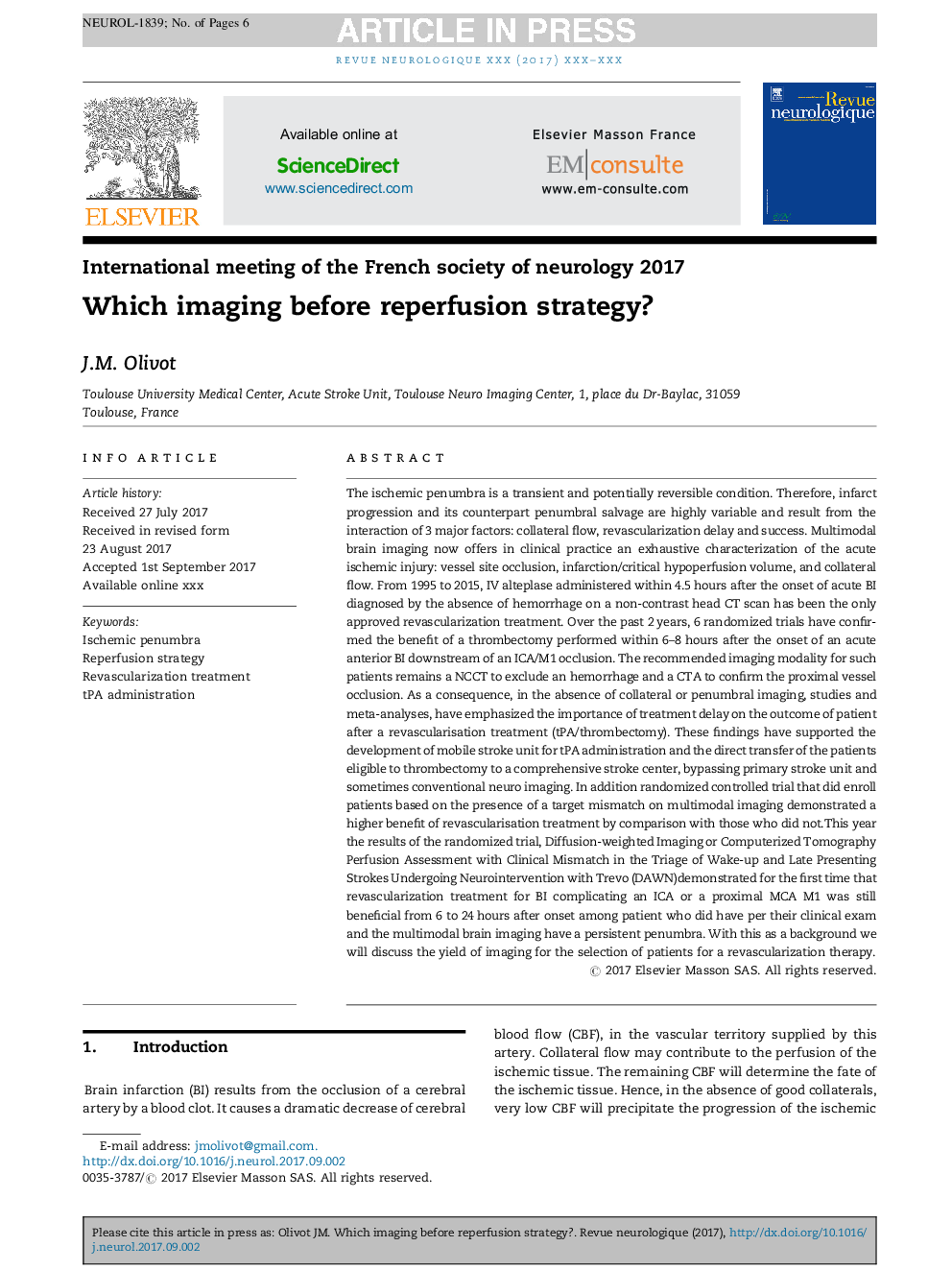| کد مقاله | کد نشریه | سال انتشار | مقاله انگلیسی | نسخه تمام متن |
|---|---|---|---|---|
| 8690896 | 1581305 | 2017 | 6 صفحه PDF | دانلود رایگان |
عنوان انگلیسی مقاله ISI
Which imaging before reperfusion strategy?
ترجمه فارسی عنوان
کدام تصویربرداری قبل از استراتژی بازپرداخت؟
دانلود مقاله + سفارش ترجمه
دانلود مقاله ISI انگلیسی
رایگان برای ایرانیان
کلمات کلیدی
موضوعات مرتبط
علوم زیستی و بیوفناوری
علم عصب شناسی
عصب شناسی
چکیده انگلیسی
The ischemic penumbra is a transient and potentially reversible condition. Therefore, infarct progression and its counterpart penumbral salvage are highly variable and result from the interaction of 3 major factors: collateral flow, revascularization delay and success. Multimodal brain imaging now offers in clinical practice an exhaustive characterization of the acute ischemic injury: vessel site occlusion, infarction/critical hypoperfusion volume, and collateral flow. From 1995 to 2015, IV alteplase administered within 4.5Â hours after the onset of acute BI diagnosed by the absence of hemorrhage on a non-contrast head CT scan has been the only approved revascularization treatment. Over the past 2Â years, 6 randomized trials have confirmed the benefit of a thrombectomy performed within 6-8 hours after the onset of an acute anterior BI downstream of an ICA/M1 occlusion. The recommended imaging modality for such patients remains a NCCT to exclude an hemorrhage and a CTA to confirm the proximal vessel occlusion. As a consequence, in the absence of collateral or penumbral imaging, studies and meta-analyses, have emphasized the importance of treatment delay on the outcome of patient after a revascularisation treatment (tPA/thrombectomy). These findings have supported the development of mobile stroke unit for tPA administration and the direct transfer of the patients eligible to thrombectomy to a comprehensive stroke center, bypassing primary stroke unit and sometimes conventional neuro imaging. In addition randomized controlled trial that did enroll patients based on the presence of a target mismatch on multimodal imaging demonstrated a higher benefit of revascularisation treatment by comparison with those who did not.This year the results of the randomized trial, Diffusion-weighted Imaging or Computerized Tomography Perfusion Assessment with Clinical Mismatch in the Triage of Wake-up and Late Presenting Strokes Undergoing Neurointervention with Trevo (DAWN)demonstrated for the first time that revascularization treatment for BI complicating an ICA or a proximal MCA M1 was still beneficial from 6 to 24Â hours after onset among patient who did have per their clinical exam and the multimodal brain imaging have a persistent penumbra. With this as a background we will discuss the yield of imaging for the selection of patients for a revascularization therapy.
ناشر
Database: Elsevier - ScienceDirect (ساینس دایرکت)
Journal: Revue Neurologique - Volume 173, Issue 9, November 2017, Pages 584-589
Journal: Revue Neurologique - Volume 173, Issue 9, November 2017, Pages 584-589
نویسندگان
J.M. Olivot,
